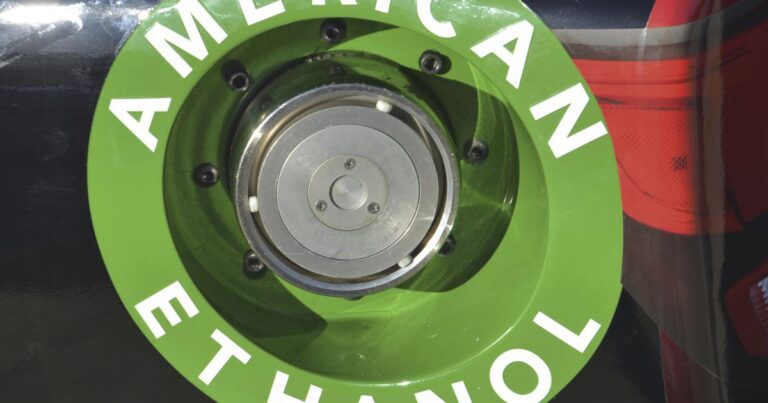DES MOINES, Iowa — Drivers in eight Midwestern states will be able to fuel up with higher ethanol blend throughout the year under a final rule announced Thursday by the Environmental Protection Agency.
The biofuels industry and farm groups, backed by Midwest governors, sought an end to a summer ban on sales of gasoline blended with 15% ethanol for years. The higher blend has been banned over concerns it could worsen smog during hot weather. The movement reflects it importance of ethanol to agriculture. The fuel additive consumes about 40 percent of the nation's corn crop, so higher ethanol sales could mean bigger profits for corn farmers.
The rule, which takes effect in April 2025, will apply in Illinois, Iowa, Minnesota, Missouri, Nebraska, Ohio, South Dakota and Wisconsin. These states grow most of the US corn crop and are home to much of the nation's ethanol production.
The EPA said it delayed implementing the new rule because of concerns that there was not enough supply to meet demand this summer. Ethanol producers welcomed the change but criticized the EPA for the delay.
“While we are pleased to see that the EPA has finally approved year-round E15 in these eight states, we are extremely disappointed by the agency's ill-advised decision to delay implementation until 2025,” the Renewable Fuels Association said in a statement. a trading group. “It's useful to finally have some certainty for 2025 and beyond, but what happens this summer?”
Most gasoline sold nationwide is blended with 10% ethanol, although 15% blends are becoming more common, especially in the Midwest. Summer E15 sales are still not allowed in most of the country during the summer, although agricultural groups are pushing for a change in policy at national level.
The biofuels industry and politicians in both parties have portrayed ethanol as a product that helps farmers, lowers prices at the pump and reduces greenhouse gas emissions because the fuel burns cleaner than regular gasoline. But environmentalists and others said increased ethanol production could increase carbon releases because it leads to more corn production, leading to increased fertilizer use and greater nitrate releases. Synthetic and natural fertilizers are also a major source of water pollution.
The EPA approved sales of E15 for cars and trucks built after 2000. Growth Energy, another bioenergy trade association, estimates the higher blend will cost consumers 15 cents a gallon less than 10% ethanol.
Oil refiners have opposed special rules for the Midwest, saying a special blend in one region would raise costs and could lead to tighter fuel supplies.
The American Petroleum Institute, a trade group, said a national standard is needed.
“We are concerned that this piecemeal approach could weaken the resiliency of the region's fuel supply chain,” Will Hupman, the group's vice president, said in a statement. “We continue to urge Congress to pass the bipartisan Nationwide Consumer and Fuel Retailer Choice Act, which would bring much-needed consistency to the market by allowing E15 to be sold year-round nationwide, preserving access to E10 and eliminating the need for regional or state-specific waiver applications”.
Copyright 2024 The Associated Press. All rights reserved. This material may not be published, transmitted, rewritten or redistributed without permission.

